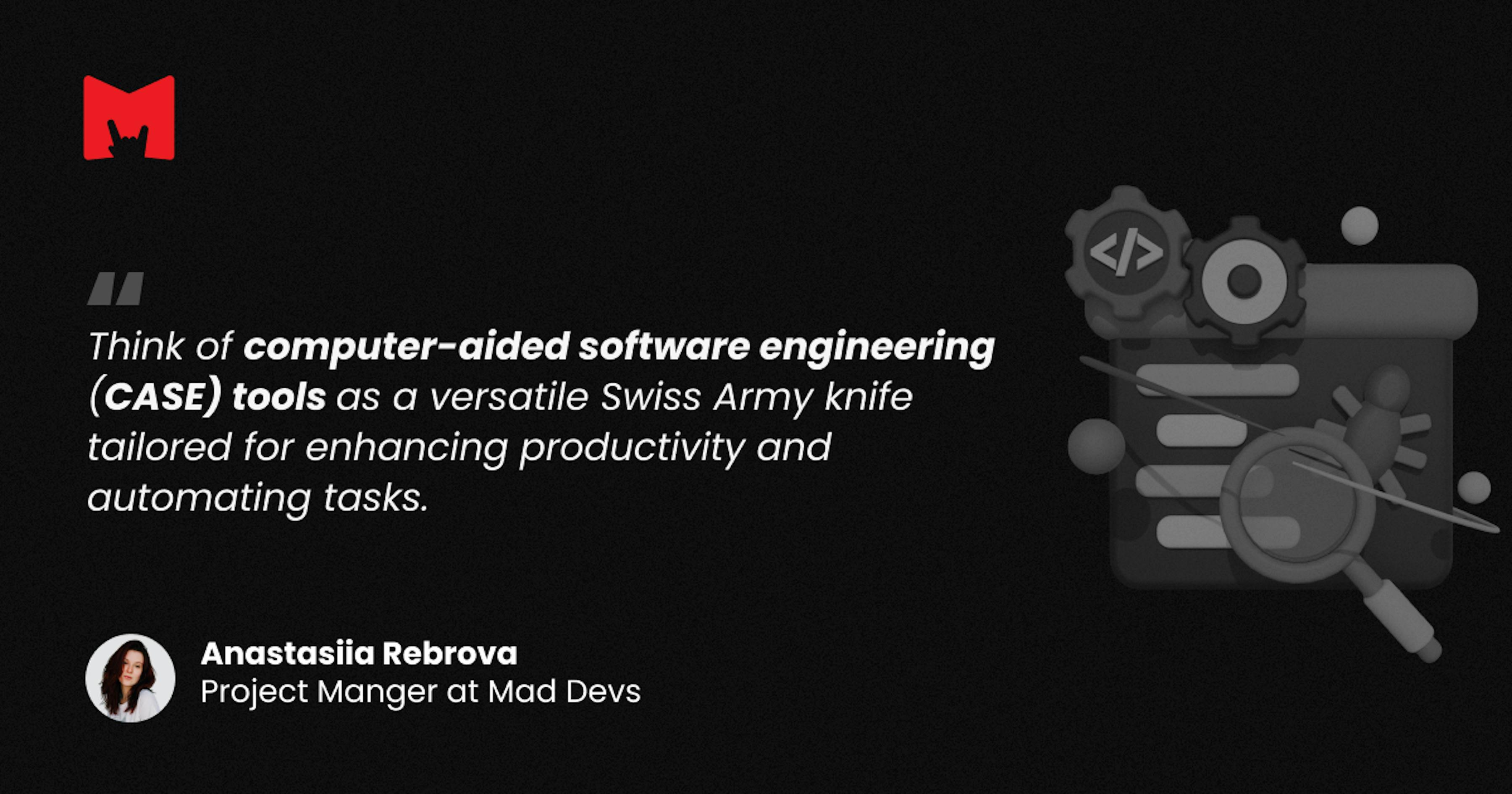
No Bad Questions About Software Development
Definition of CASE
What is computer-aided software engineering?
Computer-aided software engineering (CASE) is a broad term that encompasses various software tools and methodologies. They automate or assist with different stages of the software development lifecycle (SDLC), from design to development, testing, and deployment.
CASE automates repetitive tasks and cuts time and expenses compared to manual efforts. Developers can now launch web apps faster, with smaller budgets, and without large teams or extended overtime for each project.
Where can CASE be used?
In a nutshell, CASE has a wide range of applications across various stages of the development process. Here are some specific examples of areas where it can be used:
Visual programming: Drag-and-drop interfaces let developers build software with flowcharts and diagrams, a boon for beginners and visual thinkers alike.
Object-oriented design: CASE tools provide powerful modeling capabilities and help developers visualize relationships between classes and components, facilitating clear and efficient code structures.
Agile development: Version control systems, automated testing frameworks, and collaborative tools within CASE suites empower teams to iterate rapidly and respond to changing requirements with grace.
What are CASE tools?

Here are some common types of CASE tools and examples of what they do:
- IDEs: These are like workshops for coders that provide in one place everything they need to write, test, and debug code. Think of them as a word processor for writers but for software developers. Popular examples include Visual Studio, Eclipse, and IntelliJ IDEA.
- Version control systems: These act as time machines for code, as they track changes and allow you to go back to any previous version if needed. They are essential for teamwork and mistake prevention. Think of them as the Google Docs “track changes” feature but for code. Example: Git and SVN.
- Requirements management tools: These keep track of what the software needs to do and ensure that everyone is on the same page. Think of them as a project manager's to-do list but for software features. For example, Jira and IBM Engineering Requirements Management DOORS.
- Modeling tools: These help create visual blueprints of the software before coding, just like an architect's sketches for a building. Think of them as a visual map of how the software will work. Popular examples include Enterprise Architect and Lucidchart.
- Testing tools: These automate the process of finding bugs in the code, similar to a quality control inspector for software. Imagine a spell checker but for code. Some of the examples are Selenium and JUnit.
How can businesses benefit from using computer-aided software engineering tools (CASE)?
The magic of CASЕ tools offers businesses a multitude of benefits. Let’s elaborate on some of them:
Increased efficiency: Developers can devote more time to challenging tasks, accelerating development cycles and transforming deadlines into achievable goals.
Elevated quality and consistency: Automated testing catches problems early on, while sticking to coding rules means the software is clean and easy to maintain. Your software ends up being reliable, strong, and user-friendly.
Cost savings: Shorter development times translate to more cost-effective project budgets. Fixing issues quickly also avoids expensive rework, and clear communication prevents delays that are worth money.
Enhanced communication: Shared models, transparent documentation, and seamless version control foster a collaborative environment. No more working in isolated groups.
Key Takeaways
- CASE encompasses various software tools and methodologies that automate or assist with different stages of the software development lifecycle, from design to development, testing, and deployment.
- CASE tools include IDEs (like Visual Studio and Eclipse), version control systems (like Git), requirements management tools (like Jira), modeling tools (like Enterprise Architect), and testing tools (like Selenium and JUnit).
- Organizations gain increased efficiency through automation, elevated quality and consistency through standardized processes, cost savings from shorter development cycles, and enhanced communication through shared models and documentation.
- CASE tools are categorized as Upper-CASE (focusing on early stages like requirements analysis and system design) and Lower-CASE (focusing on later stages like code generation, testing, and maintenance).
- CASE uses centralized repositories to store all project information including business plans, design specifications, code, and test cases, enabling better collaboration and code reusability while maintaining project discipline.

